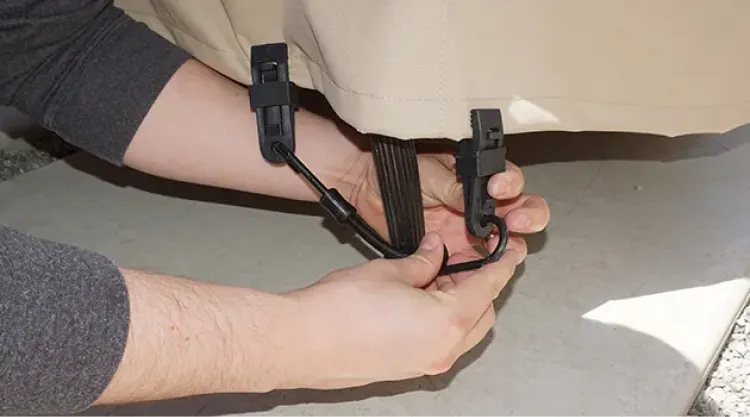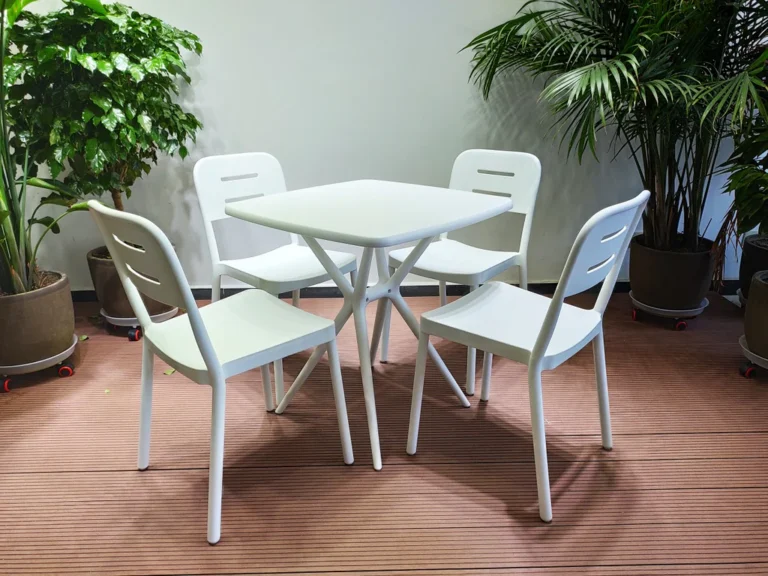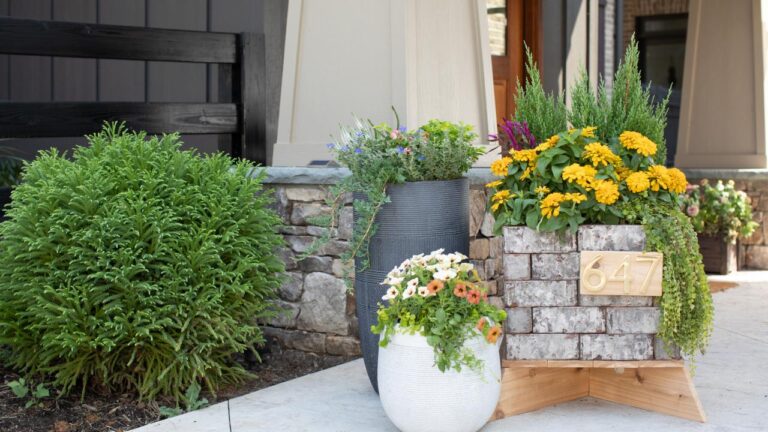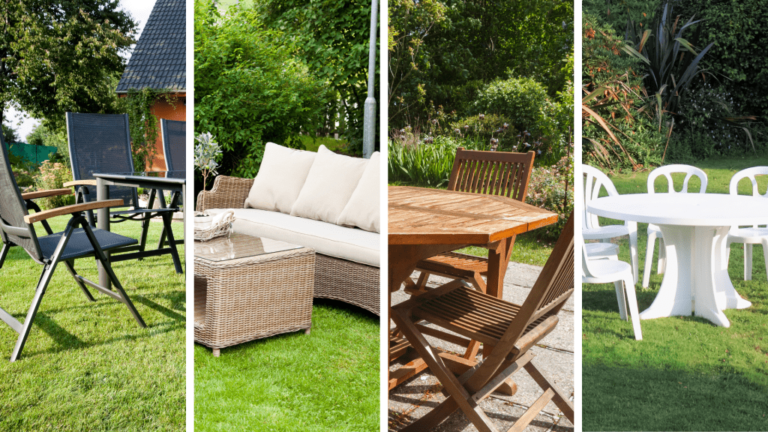Care and Maintenance of Patio Furniture Covers
Proper care and maintenance of patio furniture covers are crucial for prolonging their lifespan and ensuring your outdoor furniture remains protected. This comprehensive guide will walk you through everything you need to know, from cleaning various materials to seasonal storage tips and repairing minor damages. Whether you have polyester, vinyl, canvas, or marine-grade fabric covers, this guide has you covered.

Cleaning Your Patio Furniture Covers
Maintaining the cleanliness of your patio furniture covers not only improves their appearance but also enhances their durability. Dirt, debris, and environmental elements can deteriorate the fabric over time, so regular cleaning is essential.
Cleaning Different Materials
Each type of material used for patio furniture covers requires specific cleaning methods to ensure it remains in good condition. Here’s how to clean different types of materials:
Polyester
Polyester is a popular material for patio furniture covers due to its durability and resistance to water and stains. To clean polyester covers, follow these steps:
- Shake off Loose Debris: Start by shaking off any loose dirt or debris. This prevents scratching the fabric during washing.
- Mix Cleaning Solution: Create a mixture of warm water and mild detergent. Avoid harsh chemicals that can degrade the fabric.
- Scrub Gently: Using a soft brush or sponge, scrub the cover gently to remove dirt and stains. Focus on heavily soiled areas without being too abrasive.
- Rinse Thoroughly: Rinse the cover with clean water to remove any soap residue. Soap buildup can attract more dirt if not properly rinsed.
- Air Dry: Allow the cover to air dry completely before using it again. Avoid direct sunlight to prevent fading.
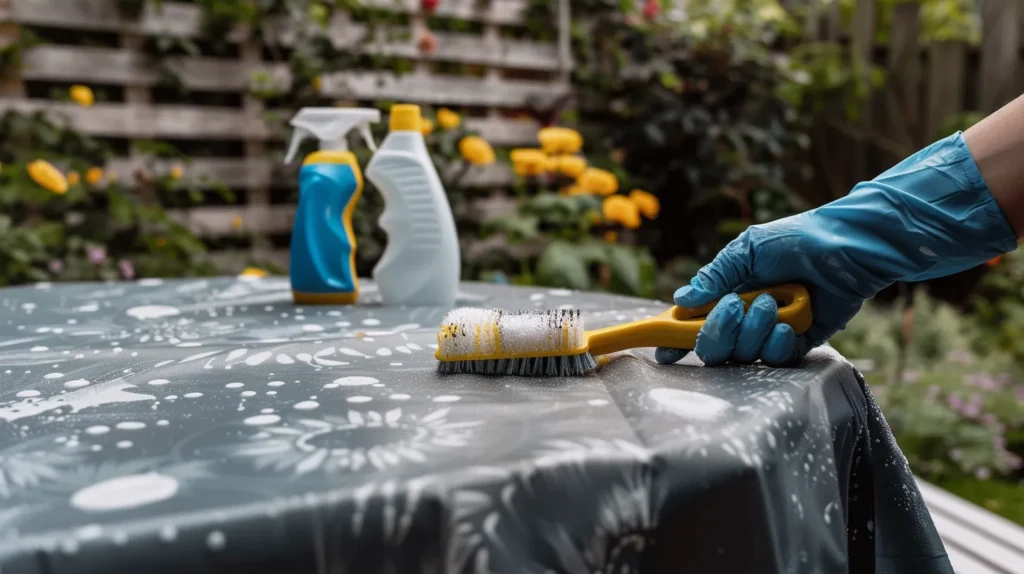
Vinyl
Vinyl covers are known for their waterproof properties, making them easy to clean. Here’s how to maintain them:
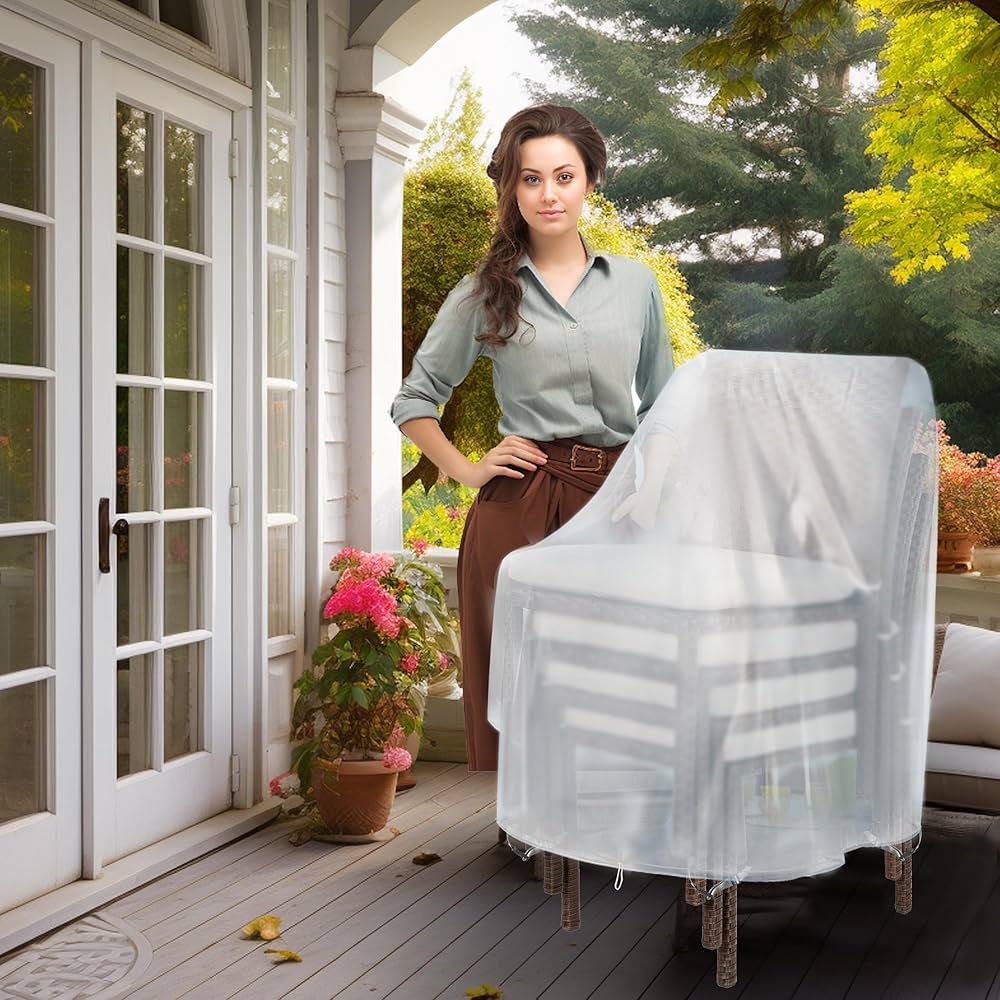
- Wipe Down Surface: Use a damp cloth to wipe down the surface and remove dust and dirt. Regular wiping helps prevent the buildup of grime.
- Mild Cleaning Solution: For tougher stains, use a mixture of warm water and a small amount of dish soap. Apply with a soft cloth.
- Avoid Harsh Chemicals: Do not use abrasive cleaners or bleach as they can damage the vinyl. Stick to gentle, non-abrasive products.
- Dry Properly: Dry the cover with a clean towel to prevent water spots and mildew. Ensure it’s completely dry before storing or reusing.
Canvas
Canvas is a sturdy material often used for heavy-duty patio furniture covers. Follow these steps to clean canvas covers:
- Brush Off Dirt: Use a soft brush to remove loose dirt and debris. Regular brushing keeps the fabric looking fresh.
- Hand Wash: Fill a large tub with warm water and add mild soap. Hand wash the cover by gently scrubbing with a soft brush. Avoid machine washing to prevent damage.
- Rinse Well: Rinse thoroughly with clean water to remove all soap residue. Soap left in the fabric can attract dirt.
- Air Dry: Hang the cover to air dry completely before putting it back on the furniture. Do not tumble dry as heat can shrink the fabric.
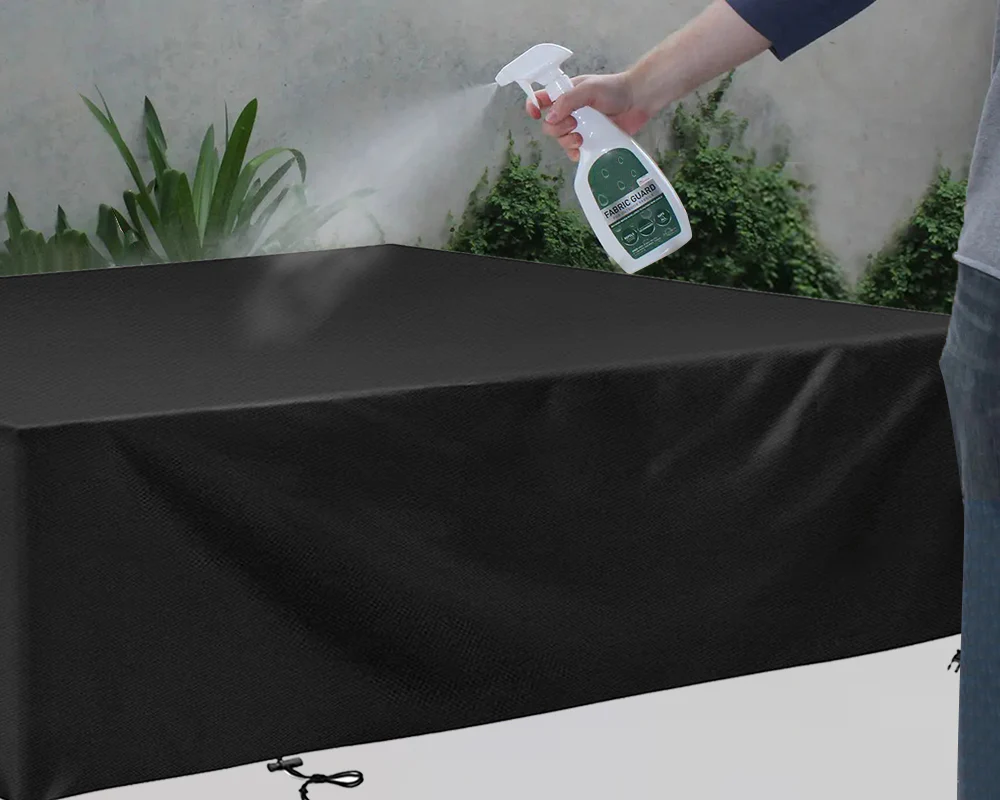
Marine-grade Fabric
Marine-grade fabrics are designed to withstand harsh outdoor conditions. Cleaning them requires special attention:
- Vacuum Loose Debris: Start by vacuuming the cover to remove any loose dirt. This is especially useful for removing fine particles.
- Mild Detergent Solution: Mix warm water with a marine fabric cleaner or mild detergent. These cleaners are formulated to handle the specific needs of marine-grade fabrics.
- Gently Scrub: Use a soft brush to scrub the fabric, paying attention to heavily soiled areas. Avoid scrubbing too hard to preserve the fabric’s integrity.
- Rinse Thoroughly: Rinse with clean water to remove any cleaning solution. Make sure no soap remains as it can attract more dirt.
- Dry Completely: Allow the cover to air dry thoroughly to prevent mildew. Avoid folding or storing while damp.
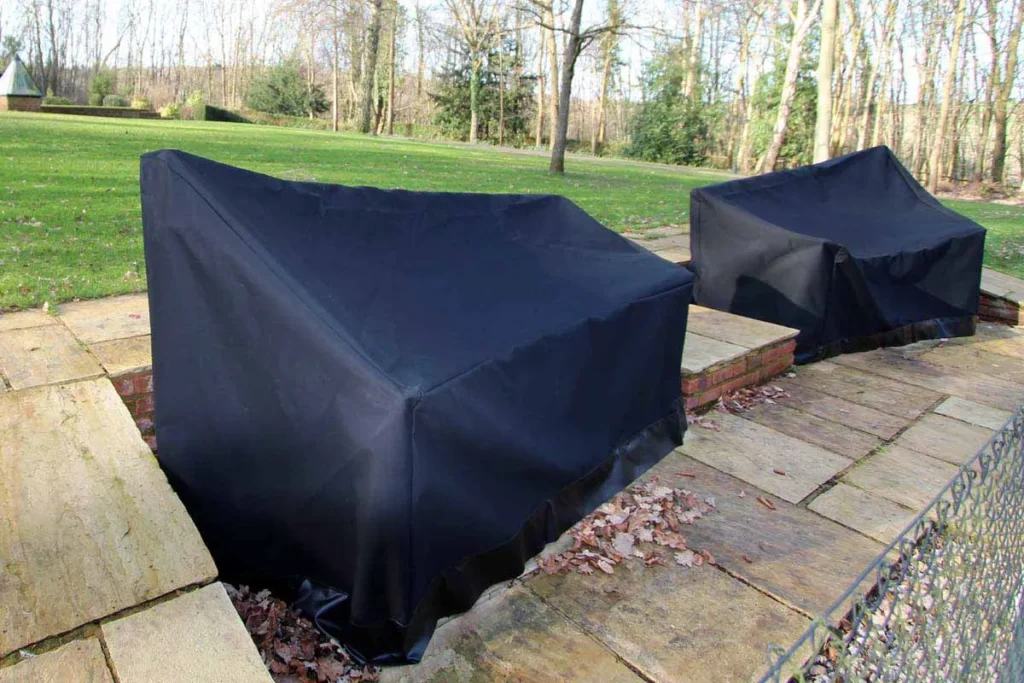
Seasonal Storage Tips
Proper storage of your patio furniture covers during off-seasons is essential to maintain their condition and prolong their lifespan. Here are some tips for seasonal storage:
- Clean Before Storing: Always clean your covers before storing them to prevent mold, mildew, and stains. A clean cover will be ready to use when the season changes.
- Dry Thoroughly: Ensure that the covers are completely dry to avoid mildew growth during storage. Mildew can cause unpleasant odors and damage the fabric.
- Fold Neatly: Fold the covers neatly to prevent creases and damage. Neatly folded covers take up less space and are easier to handle.
- Store in a Dry Place: Store the covers in a cool, dry place, away from direct sunlight and moisture. Excessive heat and moisture can degrade the material.
- Use Storage Bags: Consider using storage bags or containers to keep the covers protected from dust and pests. A storage bag with a zipper can keep out insects and rodents.
- Label Storage: Label the storage containers or bags to easily identify the covers when needed. This saves time when it’s time to bring them out again.
- Check Periodically: Periodically check the stored covers for any signs of mold or pests. Early detection can prevent extensive damage.
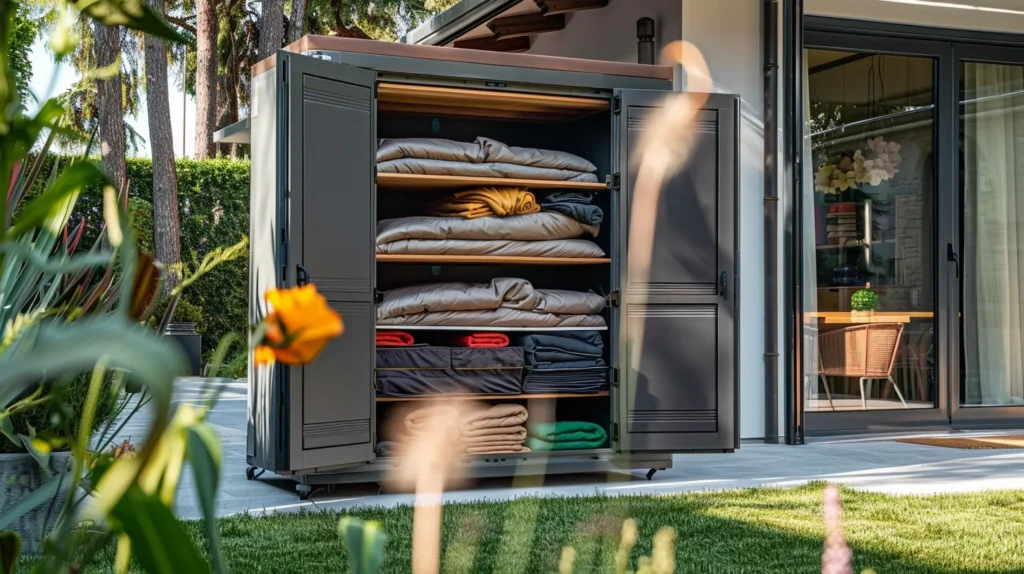
Repairing Minor Damages
Even with the best care, patio furniture covers can sometimes suffer minor damages. Here’s how to handle small repairs:
- Inspect Regularly: Regularly check your covers for any signs of wear and tear, such as small tears or loose seams. Early detection makes repairs easier.
- Patch Small Tears: Use a fabric repair kit to patch small tears. Ensure the patch material matches the cover for a seamless repair. Follow the kit instructions carefully.
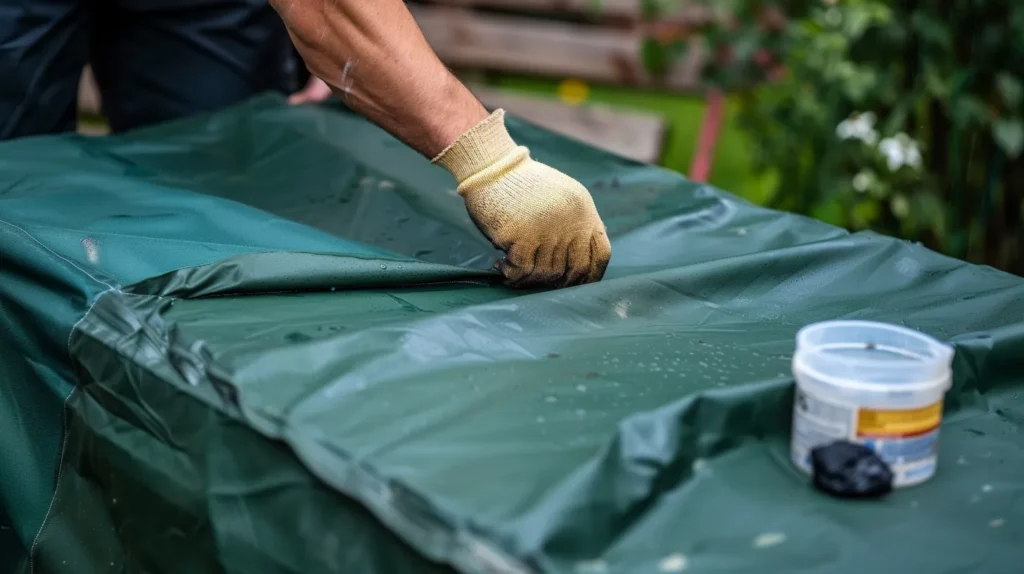
- Sew Loose Seams: If seams come loose, sew them back together with a heavy-duty needle and thread. Use a thread that matches the color and type of the original stitching.
- Reinforce Weak Areas: Reinforce any weak areas with additional stitching or fabric patches to prevent further damage. This can extend the life of your covers.
- Replace Damaged Covers: If the damage is extensive and beyond repair, it may be time to replace the cover to ensure your furniture remains protected. Consider investing in higher-quality covers for longer durability.
Additional Tips for Prolonging the Life of Patio Furniture Covers
To maximize the lifespan of your patio furniture covers, consider these additional maintenance tips:

- Regular Cleaning Schedule: Establish a regular cleaning schedule based on your environment. For example, covers in dusty or pollen-heavy areas may need more frequent cleaning.
- Use Protective Sprays: Consider using UV-protective sprays or fabric protectants to shield your covers from sun damage and stains. These products can create an additional barrier against the elements.
- Avoid Sharp Objects: Keep sharp objects away from your covers to prevent accidental cuts and tears. Be cautious when moving furniture or placing items on the covers.
- Handle with Care: When removing or putting on the covers, handle them with care to avoid unnecessary strain on seams and fabric.
- Monitor Weather Conditions: Be mindful of extreme weather conditions. In cases of severe storms or heavy snowfall, consider removing the covers temporarily to prevent damage.
- Proper Fitting: Ensure your covers fit properly. Ill-fitting covers can flap in the wind, causing wear and tear. Custom-fit covers are a worthwhile investment for better protection.
Choosing the Right Patio Furniture Covers
Investing in high-quality patio furniture covers is essential for effective protection. Here are some factors to consider when choosing covers:
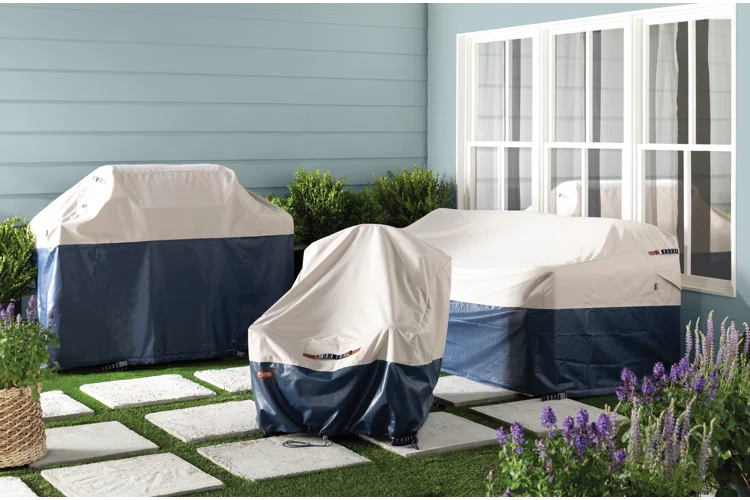
- Material Quality: Look for durable materials like marine-grade fabric, polyester, or heavy-duty vinyl. Quality materials provide better protection and longevity.
- Water Resistance: Ensure the covers are water-resistant or waterproof to protect against rain and snow. Look for covers with sealed seams for added water protection.
- UV Protection: UV-resistant covers prevent sun damage and fading. This is especially important for areas with intense sunlight.
- Size and Fit: Choose covers that fit your furniture snugly. Custom-fit covers provide the best protection and prevent wind damage.
- Breathability: Select covers with breathable fabrics or vents to prevent mold and mildew. Breathable covers allow moisture to escape, keeping your furniture dry.
- Ease of Use: Opt for covers that are easy to put on and remove. Features like elastic hems, straps, and buckles can make handling easier.
- Warranty: Check for manufacturer warranties. A good warranty indicates confidence in the product’s durability and quality.
Maintaining the Aesthetic Appeal of Your Outdoor Space
Patio furniture covers not only protect your furniture but also contribute to the overall aesthetic of your outdoor space. Keeping them in good condition ensures your patio remains inviting and well-kept. Here are some tips to maintain the aesthetic appeal:
- Color Coordination: Choose covers that complement the colors of your outdoor furniture and decor. Neutral colors like beige, grey, or black often blend well with various styles.

- Consistent Maintenance: Regularly clean and inspect your covers to keep them looking fresh and neat. Consistent maintenance prevents the buildup of unsightly dirt and stains.
- Organized Storage: Store your covers neatly when not in use. Organized storage reduces clutter and makes your outdoor area look tidy.
- Prompt Repairs: Address any damages promptly to maintain the covers’ appearance. Well-maintained covers look better and last longer.
Environmental Considerations
When caring for your patio furniture covers, consider the environmental impact of your cleaning and maintenance practices. Here are some eco-friendly tips:

- Use Eco-friendly Cleaners: Choose biodegradable and non-toxic cleaning products to minimize environmental harm. Avoid harsh chemicals that can pollute water sources.
- Water Conservation: Use water wisely when cleaning your covers. Avoid excessive use and consider cleaning in batches to conserve water.
- Recycle Old Covers: If replacing covers, recycle the old ones if possible. Some manufacturers offer recycling programs for used covers.
- Sustainable Materials: Consider investing in covers made from sustainable or recycled materials. These options reduce environmental impact and support eco-friendly practices.
Conclusion
By following these comprehensive care and maintenance tips, you can keep your patio furniture covers in excellent condition, ensuring they provide optimal protection for your outdoor furniture year after year. Proper cleaning, seasonal storage, and timely repairs will help you get the most out of your investment and keep your outdoor space looking beautiful.
Disclosure: Our blog contains affiliate links to products. We may receive a commission for purchases made through these links. However, this does not impact our reviews and comparisons. We try our best to keep things fair and balanced, in order to help you make the best choice for you.

